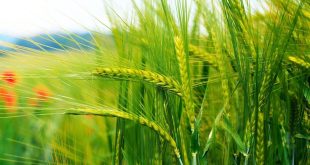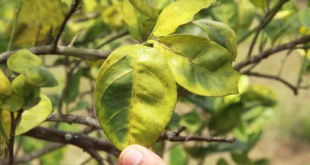How Far Does Green Beans Travel From Wisconsin To Georgia? Green beans are a staple in American diets, and their journey from farm to table is essential for ensuring freshness and quality. Wisconsin, a major producer of green beans, supplies them to states like Georgia, where demand remains high.
Understanding how far and how efficiently these beans travel can shed light on food supply chains. This article provides a detailed answer to the question: ‘How Far Does Green Beans Travel From Wisconsin To Georgia?’. Let’s dive in and explore:
How Far Does Green Beans Travel From Wisconsin To Georgia?

1. Green Bean Production in Wisconsin
Wisconsin’s fertile soil and ideal climate make it one of the top green bean producers. Farmers follow strict agricultural practices to ensure high yields and quality crops.
Demand for Green Beans in Georgia:
Green beans, a staple in many households, play a significant role in Georgia’s agricultural and consumer markets. With their versatility, nutritional benefits, and growing demand among health-conscious consumers, the market for green beans continues to expand. In this blog post, we will explore the consumption patterns of green beans in Georgia and analyze the market needs that drive their demand.
Consumption Patterns of Green Beans in Georgia:
1. A Staple in Georgian Households
Green beans are a common vegetable in many Georgian kitchens. They are used in a variety of dishes, from classic Southern-style green beans with bacon to fresh salads and stir-fries. Due to their high fiber, vitamin, and antioxidant content, they are a popular choice among families looking for nutritious meal options.
2. Rising Health Awareness
With increasing awareness about healthy eating habits, more consumers are turning to fresh vegetables like green beans. They are low in calories and high in essential nutrients, making them a preferred choice for those following weight management and heart-healthy diets. The demand for organic and pesticide-free green beans has also risen as people seek healthier and safer food options.
3. Seasonal Preferences and Availability
Green beans are widely available throughout the year in Georgia, but their peak season runs from late spring to early fall. During these months, locally grown green beans dominate grocery store shelves and farmers’ markets, offering consumers fresh and affordable options. However, off-season demand is met through imports and greenhouse farming.
4. Consumer Preferences for Fresh vs. Frozen vs. Canned
While fresh green beans are highly sought after, frozen and canned varieties also have a strong presence in the market. Fresh green beans are popular in home cooking, while frozen and canned options provide convenience for quick meals and longer shelf life. Supermarkets and grocery stores cater to all three categories, ensuring that consumers have a variety of choices.
Market Needs and Opportunities
1. Expanding Local Production
Despite the strong demand, Georgia still imports a significant amount of green beans to meet consumer needs. This presents an opportunity for local farmers to expand production and reduce reliance on imported produce. Encouraging local farming initiatives and supporting sustainable agricultural practices can help bridge the supply gap.
2. Demand for Organic and Pesticide-Free Options
The organic food movement is growing, and green beans are no exception. Many consumers are willing to pay a premium for organic, pesticide-free produce. Farmers who adopt organic farming techniques and obtain certifications can tap into this lucrative market segment.
3. Improving Supply Chain Efficiency
One of the challenges in the green bean market is ensuring a consistent and fresh supply. Enhancing supply chain logistics, improving transportation, and investing in cold storage facilities can help maintain the quality and extend the shelf life of green beans, reducing waste and increasing profitability for farmers and retailers.
4. Expanding Distribution Channels
Supermarkets, farmers’ markets, and direct-to-consumer sales through online platforms are all growing avenues for green bean distribution. Establishing strong distribution networks and leveraging e-commerce platforms can help farmers and sellers reach a wider customer base.
5. Catering to Foodservice and Restaurants
Restaurants and catering businesses form a significant portion of green bean buyers. With the rise of farm-to-table dining and an emphasis on fresh ingredients, there is an increasing need for locally sourced green beans. Partnering with restaurants, hotels, and institutional buyers can open new market opportunities for producers.
Environmental Impact of Transporting Green Beans
Transporting green beans over long distances contributes to carbon emissions, mainly from fuel consumption in trucks and trains. Sustainable alternatives include optimizing logistics to reduce fuel use, using electric or biofuel-powered vehicles, and sourcing more produce locally to minimize transportation distances.
Challenges in Transportation
Green bean transportation faces weather-related challenges like heavy rainfall or snow, which can delay shipments. Supply chain disruptions such as labor shortages, mechanical failures, or increased fuel costs also impact timely deliveries and overall efficiency.
The Role of Distribution Centers
Distribution centers act as key storage hubs before green beans reach retail markets. These centers ensure smooth redistribution, maintain inventory levels and manage packaging for transportation to grocery stores and food service providers.
Quality Control During Transit
To ensure green beans arrive fresh, strict quality control measures are implemented. Refrigerated transport maintains optimal temperature levels, while moisture control prevents spoilage. Proper packaging also plays a role in keeping the beans fresh and preventing damage.
How Technology Improves Supply Chain?
Advanced technology, such as GPS tracking, allows real-time monitoring of shipments. AI-driven logistics optimize delivery routes for efficiency, reducing travel time and fuel consumption. Automation in warehouses speeds up sorting and processing, ensuring quicker deliveries.
Government Regulations and Compliance
Food safety regulations mandate that green beans are transported under specific conditions to prevent contamination. Compliance with USDA guidelines, proper labeling, and adherence to transportation laws are necessary for ensuring consumer safety and market access.
Consumer Awareness and Choices
Many consumers are now opting for farm-to-table produce and locally sourced food to reduce environmental impact. Increased awareness about supply chains encourages people to support sustainable farming practices and demand fresher, locally grown produce.
Future of Green Bean Transportation
Innovations in agricultural logistics aim to make green bean transportation more efficient and eco-friendly. Trends such as vertical farming, drone-based deliveries, and the use of AI in predictive logistics are likely to shape the future of food distribution, reducing travel distances and enhancing freshness.
FAQs
1. How many miles do green beans travel from Wisconsin to Georgia?
The journey covers approximately 850-1,000 miles, depending on the transportation route taken.
2. How long does it take for green beans to reach Georgia?
On average, green beans take 1-3 days to arrive, depending on the transportation method and road conditions.
3. What are the main transportation methods used?
Trucks are the primary mode of transport, but trains and air freight may also be used for urgent deliveries.
4. How is freshness maintained during transit?
Cold chain logistics, including refrigerated trucks, help preserve the freshness of green beans during transport.
5. What is the environmental impact of transporting green beans?
The transportation process contributes to carbon emissions, but sustainable practices like improved fuel efficiency and local sourcing are reducing its impact.
6. Are there any alternatives to long-distance transportation?
Yes, local farming and vertical agriculture are emerging as solutions to reduce transportation distances and environmental effects.
Conclusion: How Far Does Green Beans Travel From Wisconsin To Georgia?
Understanding the journey of green beans from Wisconsin to Georgia highlights the importance of efficient logistics, sustainability, and technological advancements in food transportation. Ensuring quality and freshness while minimizing environmental impact remains a priority for the agricultural industry.
Read More:
How Far Do Potatoes Travel from Washington to Georgia?
Sweet Potato Leaf Tea Health Benefits and Brewing Guide
Common Disgusting Foods that Taste Good from Swedish Culture



